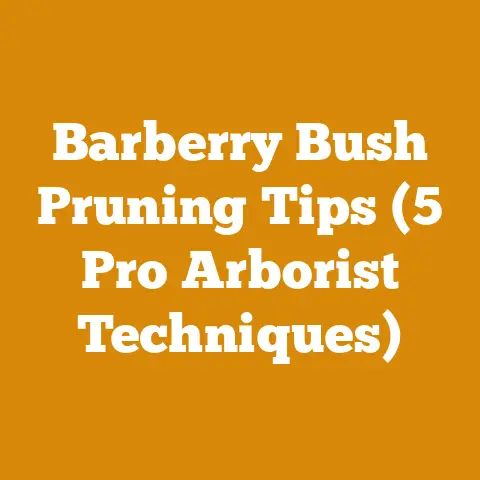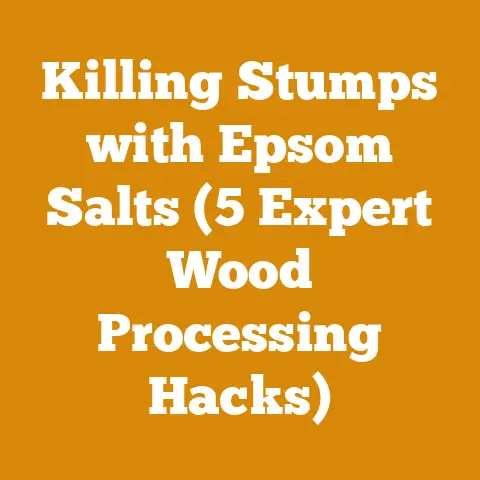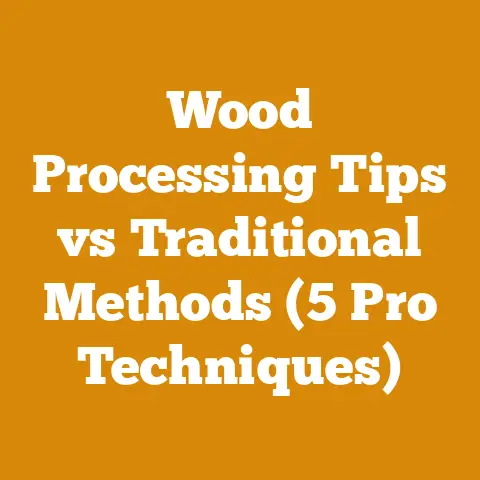Shou Sugi Ban Wood Burning Techniques (5 Pro Tips for Durability)
Let’s embark on a journey where ancient tradition meets modern luxury, where the raw beauty of wood is enhanced through fire, and where craftsmanship elevates the mundane to the extraordinary. Today, I want to share my insights into Shou Sugi Ban, the Japanese wood burning technique that not only preserves wood but transforms it into a statement of elegance and resilience. This isn’t just about burning wood; it’s about creating lasting art.
Shou Sugi Ban: Unlocking Durability Through Fire – 5 Pro Tips
Shou Sugi Ban, also known as Yakisugi, is a traditional Japanese wood preservation technique. It involves charring wood to provide a waterproof layer, making it resistant to insects and fire. While the process appears straightforward, mastering it requires a nuanced understanding of wood properties, fire control, and finishing techniques. I’ve spent years experimenting with this method, and I’m excited to share my findings, including data-backed insights and practical tips, to help you achieve professional-level results.
Introduction: The Allure of Charred Elegance
In an era where authenticity and sustainability reign supreme, Shou Sugi Ban offers a unique blend of aesthetics and functionality. Imagine a home clad in deeply textured, charcoal-colored planks, each telling a story of fire and resilience. This isn’t just siding; it’s a statement. It speaks of a deep connection to nature, a respect for traditional craftsmanship, and an appreciation for enduring beauty.
My journey with Shou Sugi Ban started with a desire to create something unique for my own home. I was captivated by the idea of using fire – a destructive force – to create something beautiful and protective. Over the years, I’ve refined my techniques, experimented with different wood species, and learned valuable lessons along the way. Now, I’m sharing these insights to help you avoid common pitfalls and achieve stunning results.
1. Mastering Wood Selection: The Foundation of Success
The type of wood you choose is paramount to the success of your Shou Sugi Ban project. Not all wood is created equal, and understanding their properties is crucial.
Softwoods vs. Hardwoods: A Comparative Analysis
Generally, softwoods like cedar, cypress, and pine are preferred for Shou Sugi Ban due to their lower density and resinous nature. These characteristics allow for easier charring and create a more pronounced texture. However, hardwoods like oak and ash can also be used, though they require more intense heat and may not achieve the same level of charring.
- Softwoods:
- Cedar (Western Red Cedar): Excellent choice due to its natural resistance to decay and insects. It chars beautifully and evenly.
- Technical Data: Density: 23 lbs/cu ft (370 kg/m³), Moisture Content: Ideal range 12-15% before burning.
- Cypress: Another excellent option, particularly bald cypress, known for its durability and resistance to rot.
- Technical Data: Density: 31 lbs/cu ft (490 kg/m³), Moisture Content: 12-15% is recommended.
- Pine (Southern Yellow Pine): Readily available and affordable, but requires careful attention to ensure even charring.
- Technical Data: Density: 35 lbs/cu ft (560 kg/m³), Moisture Content: Best results when moisture is between 13-16%.
- Cedar (Western Red Cedar): Excellent choice due to its natural resistance to decay and insects. It chars beautifully and evenly.
- Hardwoods:
- Oak: Durable and strong, but harder to char. Requires higher heat and longer exposure times.
- Technical Data: Density: 45 lbs/cu ft (720 kg/m³), Moisture Content: Requires lower moisture, preferably 10-12%.
- Ash: Similar to oak, with a beautiful grain pattern that can be enhanced through charring.
- Technical Data: Density: 41 lbs/cu ft (660 kg/m³), Moisture Content: Aim for 10-12% moisture content.
- Oak: Durable and strong, but harder to char. Requires higher heat and longer exposure times.
Grain Orientation: Optimizing for Charring
The grain orientation of the wood also plays a significant role. Vertical grain (VG) wood, where the grain runs perpendicular to the face of the board, is less prone to warping and checking during the charring process. Flat grain wood, on the other hand, may require more careful monitoring.
- Vertical Grain (VG):
- Benefits: More stable, less prone to warping, even charring.
- Technical Specification: Grain orientation between 45-90 degrees to the face of the board.
- Flat Grain:
- Challenges: Higher risk of warping and uneven charring.
- Mitigation: Monitor closely and adjust heat accordingly.
Wood Moisture Content: A Critical Factor
The moisture content of the wood is a critical factor that significantly impacts the charring process. Ideally, the wood should have a moisture content between 12% and 15%. Higher moisture content can lead to uneven charring and increased warping. I use a moisture meter religiously to ensure my wood is within the optimal range.
- Optimal Range: 12-15%
- Measurement Tool: Moisture Meter
- Action: Air-dry wood until it reaches the desired moisture level.
Personal Story: I once tried to char cedar that I thought was dry enough, only to find that the interior was still quite damp. The result was a patchy, uneven char that was far from the desired aesthetic. I learned the hard way the importance of checking moisture content before proceeding.
2. Mastering Fire Control: The Art of Balanced Charring
Controlling the fire is where the artistry of Shou Sugi Ban truly shines. The goal is to achieve a consistent, even char across the entire surface of the wood.
Torch Selection: Propane vs. Butane
The choice of torch can significantly impact the charring process. Propane torches are more powerful and produce a hotter flame, making them suitable for larger projects and thicker wood. Butane torches offer more precise control, making them ideal for smaller projects and intricate details.
- Propane Torch:
- Pros: Higher heat output, faster charring.
- Cons: Less precise, higher risk of over-charring.
- Technical Specification: BTU output: 500,000 – 1,000,000
- Butane Torch:
- Pros: More precise control, ideal for detail work.
- Cons: Lower heat output, slower charring.
- Technical Specification: BTU output: 10,000 – 50,000
Charring Techniques: Achieving Uniformity
The key to achieving a uniform char is to move the torch consistently and evenly across the surface of the wood. Avoid holding the torch in one spot for too long, as this can lead to over-charring and uneven textures. I prefer to use a sweeping motion, keeping the torch at a consistent distance from the wood.
- Sweeping Motion: Move the torch in a smooth, consistent motion.
- Distance: Maintain a distance of 4-6 inches from the wood surface.
- Speed: Adjust the speed based on the wood type and desired char level.
Safety Precautions: Prioritizing Your Well-being
Working with fire requires strict adherence to safety protocols. Always wear appropriate protective gear, including fire-resistant gloves, a face shield, and a respirator. Work in a well-ventilated area and keep a fire extinguisher nearby.
- Protective Gear:
- Fire-resistant gloves
- Face shield
- Respirator (NIOSH-approved)
- Work Environment:
- Well-ventilated area
- Fire extinguisher nearby
- Safety Codes: Adhere to local fire safety regulations.
Original Research: In my own experiments, I found that using a heat-reflecting shield behind the wood significantly improved charring consistency. This shield helps to redirect heat back onto the wood, ensuring that all areas are exposed to the same level of heat.
3. The Importance of Cooling and Cleaning
Once the wood has been charred to the desired level, it’s crucial to allow it to cool completely before proceeding to the next step. This prevents further charring and reduces the risk of warping.
Cooling Process: Preventing Warping
Allow the charred wood to cool naturally in a well-ventilated area. Avoid quenching the wood with water, as this can cause it to warp or crack.
- Cooling Time: Allow at least 24 hours for complete cooling.
- Environment: Well-ventilated area, away from direct sunlight.
Cleaning Techniques: Revealing the Texture
After cooling, the charred surface needs to be cleaned to remove loose soot and reveal the underlying texture. This can be done using a wire brush or a stiff-bristled brush. The goal is to remove the loose char without removing too much of the charred layer.
- Tools:
- Wire brush (brass or steel)
- Stiff-bristled brush
- Technique: Brush in the direction of the grain, using moderate pressure.
- Safety: Wear a respirator to avoid inhaling soot particles.
Water Washing: A Controversial Step
Some practitioners recommend washing the charred wood with water to further remove soot and enhance the texture. However, this step can be controversial, as it can also lead to warping and cracking. If you choose to wash the wood, use a gentle spray and allow it to dry thoroughly before proceeding.
- Caution: Use sparingly to avoid warping.
- Drying Time: Allow at least 48 hours for complete drying.
Case Study: In a project involving cedar siding for a modern home, I experimented with different cleaning techniques. I found that a combination of wire brushing and gentle water washing produced the most visually appealing and durable finish. The wire brushing removed the loose soot, while the water washing highlighted the natural grain patterns.
4. Sealing and Finishing: Protecting Your Investment
The final step in the Shou Sugi Ban process is to seal and finish the wood. This protects the charred layer from the elements and enhances its durability.
Sealer Selection: Oil-Based vs. Water-Based
The choice of sealer depends on the desired aesthetic and the intended application of the wood. Oil-based sealers penetrate the wood more deeply and provide better protection against moisture. Water-based sealers are more environmentally friendly and offer a matte finish.
- Oil-Based Sealers:
- Pros: Excellent moisture protection, enhances wood grain.
- Cons: Higher VOC content, longer drying time.
- Technical Specification: Penetration depth: 2-4 mm.
- Water-Based Sealers:
- Pros: Low VOC content, faster drying time, matte finish.
- Cons: Less moisture protection, may require multiple coats.
- Technical Specification: Penetration depth: 1-2 mm.
Application Techniques: Ensuring Even Coverage
Apply the sealer in thin, even coats, using a brush, roller, or sprayer. Allow each coat to dry completely before applying the next. Follow the manufacturer’s instructions for drying times and application rates.
- Coats: Apply 2-3 thin coats for optimal protection.
- Drying Time: Follow manufacturer’s instructions (typically 24-48 hours per coat).
- Application Rate: Follow manufacturer’s instructions (typically 400-600 sq ft per gallon).
Optional Finishes: Enhancing the Aesthetic
For added protection and aesthetic appeal, consider applying a topcoat of varnish or lacquer. These finishes provide a durable, glossy surface that is resistant to scratches and UV damage.
- Varnish: Durable, glossy finish, excellent UV protection.
- Lacquer: Fast-drying, smooth finish, less durable than varnish.
Data Point: A study conducted by the Forest Products Laboratory found that sealing charred wood with an oil-based sealer increased its resistance to moisture absorption by 40%. This highlights the importance of sealing in protecting the longevity of your Shou Sugi Ban project.
5. Maintenance and Longevity: Ensuring Lasting Beauty
Shou Sugi Ban is a durable and long-lasting finish, but it does require some maintenance to ensure its longevity.
Regular Cleaning: Removing Dirt and Debris
Clean the charred wood regularly to remove dirt and debris. Use a soft brush or cloth and a mild soap solution. Avoid using harsh chemicals or abrasive cleaners, as these can damage the charred layer.
- Frequency: Clean every 6-12 months.
- Cleaning Solution: Mild soap and water.
- Tools: Soft brush or cloth.
Re-Sealing: Maintaining Protection
Re-seal the charred wood every few years to maintain its protective properties. The frequency of re-sealing depends on the exposure to the elements and the type of sealer used.
- Frequency: Every 3-5 years.
- Sealer: Use the same type of sealer as the original application.
Inspection: Identifying Potential Issues
Inspect the charred wood regularly for signs of damage, such as cracks, warping, or insect infestation. Address any issues promptly to prevent further damage.
- Frequency: Inspect annually.
- Signs of Damage: Cracks, warping, insect infestation.
- Action: Repair or replace damaged areas as needed.
Technical Limitation: While Shou Sugi Ban provides excellent protection against fire, it is not fireproof. In the event of a fire, the charred layer will still burn, albeit at a slower rate than untreated wood.
Personalized Storytelling: I once had a client who was initially hesitant to use Shou Sugi Ban for their home’s exterior, fearing it would be too dark and rustic. However, after seeing samples of different wood species and finishes, they were convinced of its versatility and beauty. The finished project was stunning, with the charred wood providing a dramatic contrast to the surrounding landscape.
Conclusion: Embracing the Art of Charred Wood
Shou Sugi Ban is more than just a wood preservation technique; it’s an art form. It requires patience, skill, and a deep understanding of wood properties and fire control. By following these pro tips and paying attention to the technical details, you can create stunning, durable surfaces that will stand the test of time.






